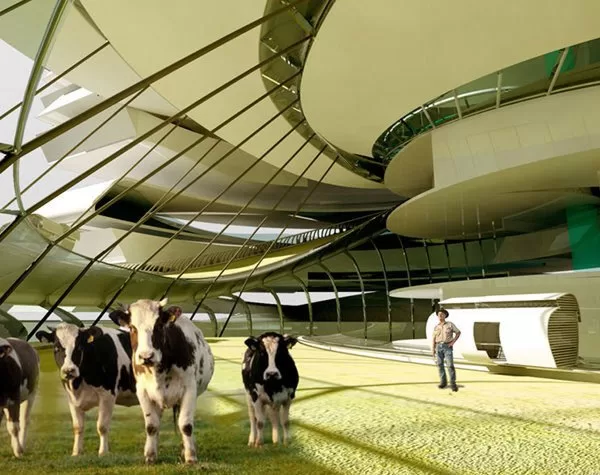Tristan told me to come to Dublin that weekend and bring my boots. He had gotten the allotment. He had been on the list for over a year, and it was finally his. Tristan said the word again, as if it was the grandest thing he knew: The Allotment.
I was not surprised that the allotment was a small piece of dirt the size of a modest kitchen, cordoned off by rackety lattice. The ground itself was not real, but where fill had been dumped on an empty building lot in the inner city. The rent for the allotments was the equivalent of $150 a year. It was not horticulturally possible to make up in produce a quarter of what was paid for that small bit of soil, let alone the supplies people acquired to plant their vegetables. The gardening happened behind a chain-link fence, towered over by warehouses on both sides. There were fifteen sections, busied by urban Irish people wearing straw hats. They talked at length about the art of cultivation.
I know I’m not a good person because of this: I cringed at how excited they were about their allotments.
We went to a garden center a few blocks away. The intensity of the situation culminated when the clerk said that they had chicken and horse manure to purchase for fertilizer. I turned to Tristan and told him that I couldn’t be friends with someone who paid for manure.
The phrase “Urban Agriculture” seems like an oxymoron, and while the term does exist, it is still an incongruous notion. To date, the most palpable concept of using urban space to grow vegetables involves planting them on the roofs of buildings and designing structures to sustain the extra weight of the soil. However, in 1999 an old idea began to reemerge in conversation. Dickson Despommier and his class at Columbia began to reconsider the theory of vertical farming as a way to support the growing population.
According to the World Health Organization, the number of people in the world is expected to rise to over 9 billion by 2050. Using conventional farming practices, an additional amount of productive land equivalent to the size of Brazil will be needed to feed the extra population, which does not exist. Despommier suggests that multi-floor indoor farming in urban areas can help balance the math. Designs for vertical farms range from towering sci-fi like structures to multilevel greenhouses that are in operation today. One vertical farm in Singapore places stacks of potted plants on conveyor belts and rotates them every several hours so that each one receives equal sunlight by the windows. Tokyo has a building both used for growing edible plants and housing a non-related HR company, in which members can pick vegetables from various floors, including rice, to make their lunch.
Many of the problems with the implementation of vertical farming are predictable. A 60-hectare vertical farm is estimated to cost over $100 million so far, and may require so much extra energy as to not make it ecologically friendly. Indoor agriculture also produces more greenhouse gases than field crops, casting further doubt on the benefits of the concept. Still, Despommier and proponents suggest that many of these hindrances can be alleviated, either with current technology or with that which may come. He points out the inherent advantages, such as year-round growing seasons, protection from weather loss, and having more control over the growing process.
How soon and in what form urban agriculture will take shape in the next years is yet to be seen. Cattle farming is unlikely to go vertical (although imagine putting a dry cow in an elevator to move her to another lot). Still, it won’t be immune from the changes to come. Land demand will increase exponentially, and beef and dairy farming will face growing scrutiny as cattle get blamed for both greenhouse gases and requiring land that is not directly feeding people. Can vertical farming help ease some of these pressures by moving vegetable production to the cities and reserving the countryside for other agriculture? Can it save more land for grazing and grains? While we can only speculate at what the next 30 years will look like, part of me wonders if vertical farming will help revolutionize one type of farming system while remaining another to keep its traditions.
I might have been guilty of pointing out to Tristan the daft economics of renting his piece of dirt, and how there were more fun ways to waste money. I might have even been a bad friend and called the whole thing silly. Still, the man weeded with faith. He plucked out rocks like growing potatoes would change his life and the city of Dublin as well. He believed in his allotment. In the end, that was enough to make me bend down and start pulling weeds too.
This article is part of The Milk House Column series, published in print across four countries and two languages. It can also be found at themilkhouse.org.
This article appeared in a similar form in Progressive Dairyman.
Looking for more about farming? Check out our best farm stories that we’ve published so far.

